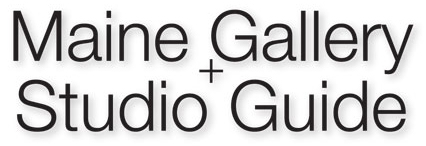
In Michael Kolster’s “Take Me to the River” at the The Maine Museum of Photographic Arts, the artist explores four post-industrial rivers that flow into the Atlantic Ocean — the Androscoggin (Maine/New Hampshire), Schuylkill (Pennsylvania), James (Virginia) and Savannah (Georgia/South Carolina) — as they emerge from two centuries of use and neglect.
With vastly improved water quality in each river since enactment of the 1972 Clean Water Act, public affection has gradually increased as memories of foul smells and fetid water fade. Today, these rivers still carry the legacies of longstanding pollution in their currents and sediments, yet they have become waterways, renewed and rediscovered, that our grandparents never could have envisioned.
“Take Me to the River” comprises four portfolios of ambrotypes of these rivers, from source to sea. Three extensive essays offer different perspectives on ways of seeing and thinking about these places: one by the photographer on the collodion process; a historical view by Alison Nordström, the former Senior Curator of Photography at the George Eastman House, on the importance of Kolster’s work; and an environmental history of Atlantic rivers by the noted historian Matthew Klingle.
Kolster’s dramatic yet understated photographs were made in a portable darkroom set up along the banks of the rivers with the wet-plate photographic process, a 19th-century method famously used to document the battlefields of the Civil War and the great vistas of the far American West. The chemical slurries that develop and fix the image on the glass plate mimic the movements of a river’s current, and the idiosyncratic qualities of the ambrotypes reference the historical coincidence of the dawn of photography and the industrialization of Europe and America.
With consensus building about our changing climate and the extent humans are responsible, these four Atlantic rivers challenge us to set aside our usual blinders of seeing the landscape as either pure or despoiled. As the boundaries between the human and the natural are increasingly entangled, these rivers suggest how we might embrace, even cherish, places once degraded and ignored.
A gallery talk with Michael Kolster will be held from 5 to 8 p.m. March 31.
A Spring Collaboration with Grippy Tannins will be held from 5 to 8 p.m. April 15, with jazz by the van Voorst Quartet.
The Maine Museum of Photographic Arts is at 15 Middle St., A3, Portland. See www.mainemuseumofphotographicarts.org for more information.
Categories: Artists Reception, exhibitions, gallery, Portland, shows
Tags: art, photography

